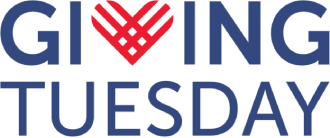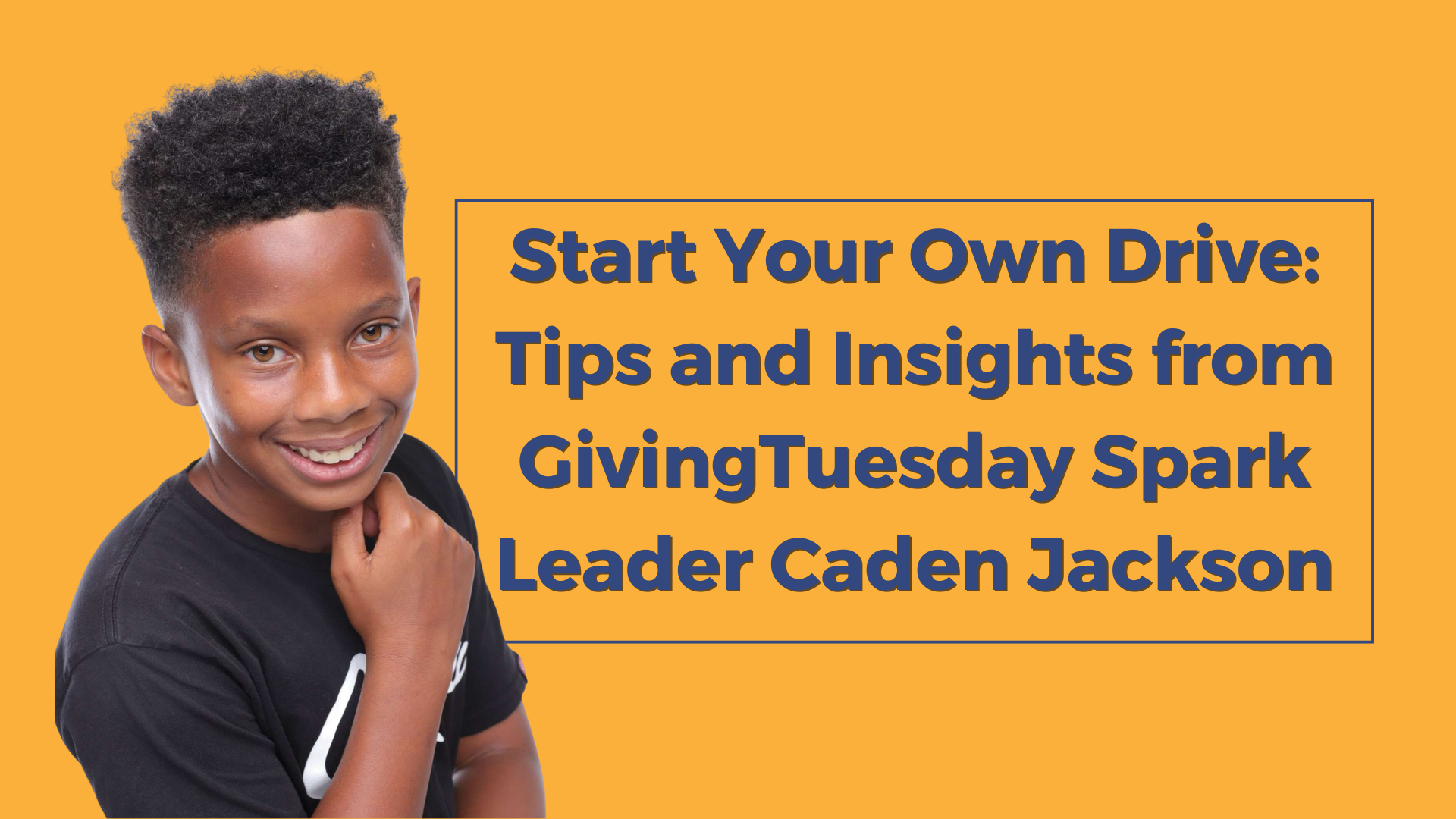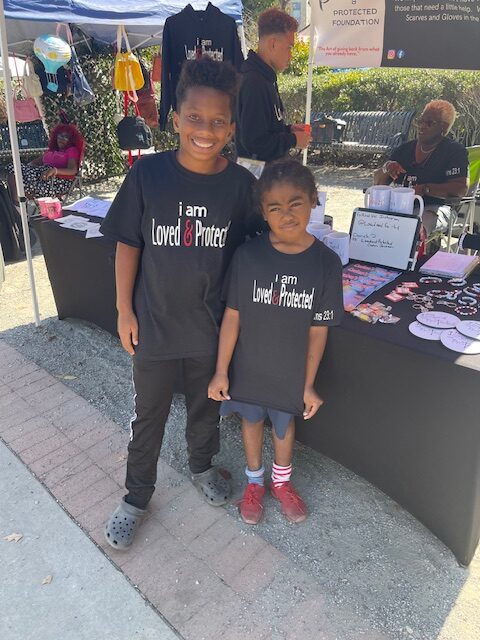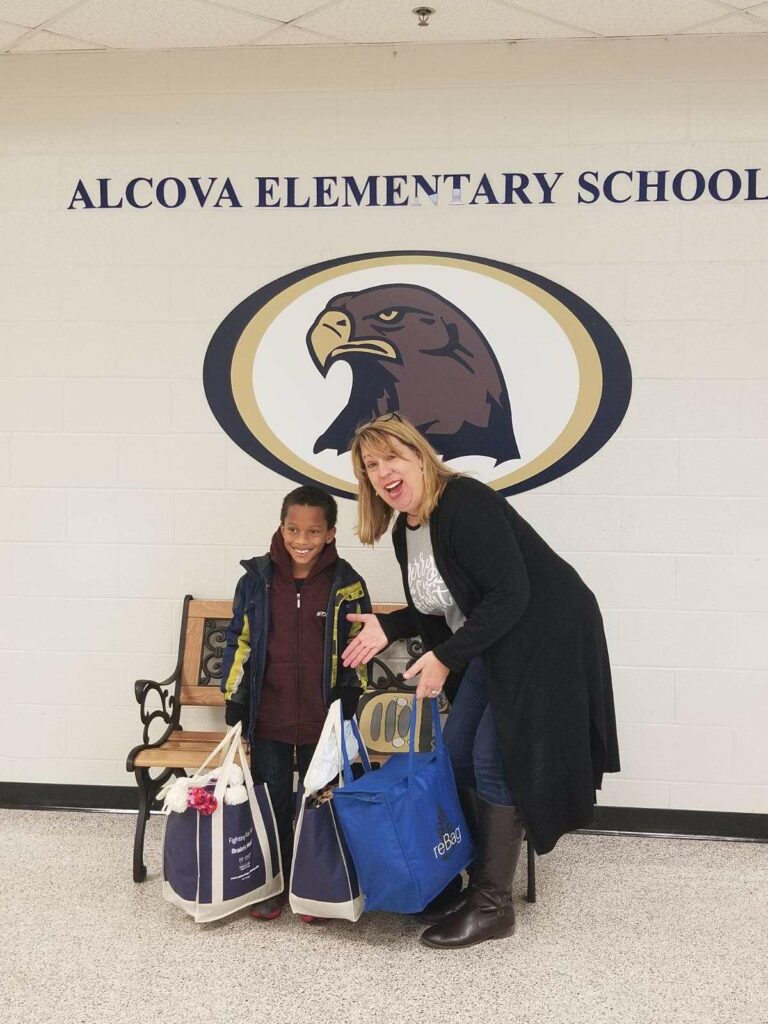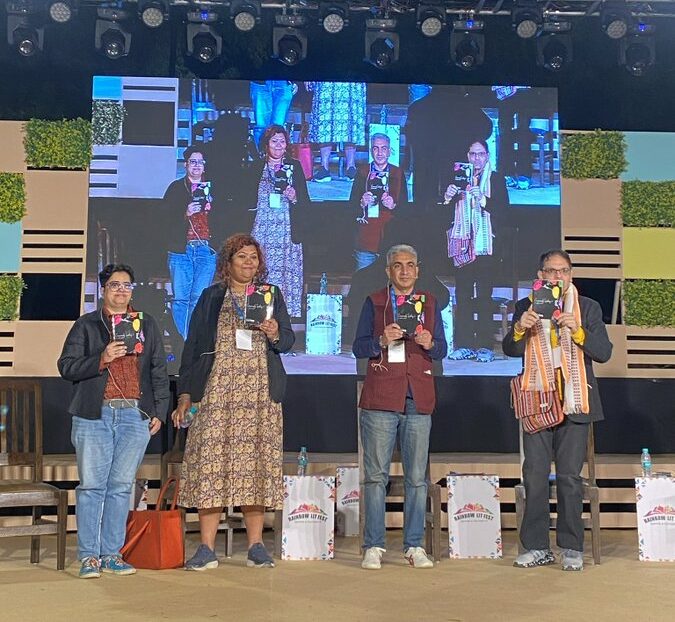Around the world, kids and teens are proving that generosity has no age limit. Through GivingTuesday Spark, young leaders are taking action in their communities, creating projects that meet real needs and inspire others to give back.
One of those young leaders is Caden Jackson, the CEO and Founder of the Loved & Protected Foundation. Caden started his work when he was just four years old, collecting hats, scarves, and gloves for children in need. More than a decade later, he continues to organize drives that support children in foster care, those facing homelessness, and kids who simply need a little extra help.
We spoke with Caden about what inspired him to start giving back, the lessons he’s learned from running donation drives, and how he’s planning to make an impact this GivingTuesday. He also shares tips for other kids and teens on how to organize a successful drive in their own communities, from picking a cause to spreading the word and keeping people involved.
Q&A with Caden Jackson — GivingTuesday Spark Leader and Founder of the Loved & Protected Foundation
Q: Can you share a little bit about yourself and your organization?
A: I started Loved & Protected when I was 4 ½ years old.
I used to have nightmares and my mother would read Psalms 23 to me nightly. One night I told her, ‘That means that I’m loved and protected.” That inspired me to write my first book,“Caden’s Prayer: The Little Boy Who Conquered Fear”, to share my story. My mission is to support foster children, those facing homelessness, and children requiring extra help.
I measure the impact of my work by the number of children we assist and by partnerships we build with schools, programs, and agencies. This is an approach that helps me ensure that our efforts reach those who need them most. My mission is to help kids who are in foster care, facing homelessness, and those children that need a little extra help.
Over the years, I have grown that footprint by partnering with headstart programs, daycare centers within my county, foster care agencies, local shelters for moms and children, and foodbanks. I also connect with other agencies to ensure that collected items get into the hands of children that need them the most. Expanding collaboration with community organizations is a powerful way to grow your footprint and make a greater difference. We are continually making connections with organizations that are servicing children who need them most.
Here are some ways to start similar initiatives in your communities:
- Begin by identifying a specific need and your personal passion.
- Build partnerships with local schools, shelters, food banks, and community organizations.
- Use creative avenues like writing or storytelling to raise awareness and inspire others.
- Measure impact through tangible outcomes, such as items delivered or children supported.
- Stay committed and engage others through volunteer opportunities and community events.
Q: Is there a particular drive you’ve hosted that stands out?
A: Yes! This year I had the opportunity to lead a drive that I called #UnderwearEssentials. I partnered with the local food pantry that services our entire county. Specifically, the need was for underwear, bras and t-shirts for teenage boys and girls.
Q: What have you learned from leading campaigns like this?
A: I can honestly say that I did not realize there was something called underwear insecurity. I learned about the great need for underwear among children in need, and how something so simple can give them confidence, help them miss less school, and allow them to focus better in class. That’s when I knew I had to take action.
Here I will share a few important statistics:
- 46% of parents living in poverty say that underwear is among the clothing items hardest to find for their children, highlighting the significant need for such essentials among low-income families.
- Children lacking underwear are more likely to be distracted in school, which can impact their learning and overall well-being, emphasizing the importance of providing this basic necessity to support their development and focus. (Undies For Everyone)
Q: Share three things you wish you knew today about hosting drives.
A:
- Clarity makes giving easier: Be specific about what you need (size, age, drop-off info, amazon wishlist). When people know exactly when and what to give, they are ready to help.
- Share your story with your “why”: Then others will rally around you and spread the word for you. It becomes community driven.
- Make it visual: Show how the items you’re collecting will help children. For example, you could create a video about a child being cold at the bus stop or standing outside without a proper winter garment. Make the need visual.
Q: When organizing a drive, how do you get the word out and keep people engaged?
A:
- Create a professional flyer with all the important information to be used throughout the drive.
- Once you kick off the donation drive, use your flyer every time you post, create a Reel, or attend in-person events. Pass it out at church, school, or post at a local business with event boards.
- Walk into a small business and ask if they will put up a flyer or host a collection box.
- Schedule messages: Share updates 2-3 times a week, either new info or reminders. Ask friends and family to post or share your message on their social media pages too.
- Email your supporters and collect emails so you can send out info.
- Ask to speak about it at your church, youth organization, or school events.
Q: What advice do you have for someone who wants to organize their first drive for GivingTuesday?
A: Keep it simple and choose something you are passionate about. For example, I love to eat at Chick-fil-A, so during Service days in February, I would go there and buy 2 or 3 lunches for individuals standing in line as an act of kindness. My mom would chaperone, and we went into the restaurant and told the manager what we wanted to do and they agreed. Then I would wait for the individual to come in and ask permission to buy them lunch. Many said no at first but when they realized it was an act of kindness, they said yes!
For my first hats, scarves and glove drive, my family spoke with the school counselor at my brother’s elementary school (I wasn’t in school yet). The school counselor and principal loved the idea. Ms. Oneal, the school counselor, told us about their Christmas Gift room, where, every year, businesses and organizations would donate to the school to prepare Christmas gifts for children in need. We created a flyer, and lots of family and friends donated and sent items to my house. The school asked that we deliver the items by the first week in December, so they could be distributed to the students before Christmas break. We scheduled a day to go take everything to the school.
I collected 236 hats, scarves and gloves in my very first donation drive, and we went to the school to drop everything off. The principal even took a picture with me and my box of donations. Although we didn’t meet the children, it was the best to give back to such a great cause. The key is to do something that matters to you, and find an organization you can support that is providing for children in need.
Q: We know it’s several months away, but what can we expect for GivingTuesday 2025 on Dec. 2?
A: We are currently researching who or what organization we will support for GivingTuesday 2025. I want to make a difference in children’s lives by giving them something they really need, that will give them confidence and make them feel loved and protected. There are many causes to choose from, so I always do research on what’s happening and needed in my community. Whatever we choose, expect that we will support a great cause and the youth and maybe even their pets will benefit! 🙂
How You Can Run a Drive: Key Takeaways from Caden
- Start with what matters to you: Pick a cause you care about—helping kids, animals, or your community. Your passion inspires others!
- Keep it simple & specific: Be clear about what you’re collecting, sizes, ages, drop-off info, so people know exactly how to help.
- Partner up: Work with schools, youth groups, churches, shelters, or food banks to reach more people and make a bigger impact.
- Share your story: Tell everyone why your drive matters. Use flyers, posts, or short videos to show how your donations help.
- Take action & stay involved: Small acts, like warm clothes, meals, or school supplies, can make a huge difference. Keep your community updated and celebrate wins!
- Track your impact: Count what you collect and who you help. Seeing your results motivates others and helps you plan even bigger drives.

